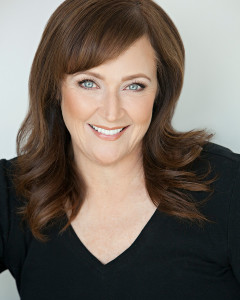Blue Like Me (Trevor Finnegan 2) by Aaron Philip Clark-Review & Author Interview
Amazon.com / Amazon.ca / Amazon.uk / Amazon.au /
Don’t own a Kindle? Download the FREE Amazon Kindle App for your mobile device or pc
ABOUT THE BOOK: Release Date November 8, 2022
A brutal homicide sets an ex-cop and his former partner on the hunt for an enigmatic killer in a gripping thriller by the author of Under Color of Law.
When former detective Trevor “Finn” Finnegan became a PI, he adopted a new mandate: catch the LAPD’s worst in the act. While on surveillance in Venice Beach, Finn tails two potentially dirty cops: Detective Martin Riley and Finn’s ex-partner, Detective Sally Munoz. Things take a deadly turn when an unknown assailant executes Riley and wounds Munoz. In an instant, Finn goes from private eye to eyewitness.
Munoz needs Finn to help find Riley’s killer, but doing so could blow his cover. She’s an officer shaded by rumors. Maybe she’s still a good cop—but maybe she’s not. Finn’s reluctance ends when his dear “uncle,” an ex-LAPD detective, is murdered, and it might be connected to Riley’s death.
To prevent more bloodshed and avoid becoming the next targets on the killer’s list, Finn and Munoz will have to bury their complicated past, trust each other, and come face-to-face with painful secrets that could destroy them both.
••••
REVIEW: BLUE LIKE ME is the second instalment in Aaron Philip Clark’s contemporary, adult TREVOR FINNEGAN murder, mystery, thriller series focusing on former LAPD Detective turned PI Trevor Finnegan. BLUE LIKE ME can be read as a stand alone but for back story and cohesion, I recommend reading book one UNDER COLOR OF LAW as most of the events of Blue Like Me are as of a direct result from the previous instalment.
NOTE: Due to the nature of the story line premise, there may be triggers for more sensitive readers.
Told from first person perspective (Trevor) BLUE LIKE ME is set in 2016, and follows former LAPD Detective turned PI Trevor Finnegan as he is tasked with tailing two LAPD police officers thought to be involved in $ex trafficking crimes but a new assignment finds Trevor following two more detectives, detective of whom he has personal knowledge but all does not go according to plan when a gunman kills one of Trevor’s targets, and injures the other while on the run. Trevor knows that to get involved means facing the wrath of the department for which he once worked, a department that labelled our hero, just another dirty cop. As Trevor works in tandem with injured LAPD Detective Sally Munoz, secrets begin to reveal a connection to a case long thought buried and gone. While his life as a PI is getting more dangerous and dark, his personal life begins to spiral out of control.
Trevor Finnegan lost his job as a detective two years earlier in the wake a scandal, accountability in law enforcement, and the death of a murdered black academy cadet. Fast forward to present day, Trevor now works as a private investigator but quickly discovers many of his targets are members of the LAPD, men and women for whom he once worked. From dirty cops to murder, evidence tampering and bribery, secrets and lies, Trevor uncovers a trail dating back several decades, decades in which time served resulted in the death of a possible innocent man.
BLUE LIKE ME is a gritty and impassioned story of desperation and reprisal, power and control, betrayal and injustice, exposure and lies. The premise is tragic and dramatic; the characters are desperate, determined and broken.
Copy supplied by Netgalley
Reviewed by Sandy

TRC: Hi Aaron, and welcome to The Reading Cafe.
We would like to start with some background information. Would you please tell us something about yourself?
Social Media Links: Twitter / Facebook / Goodreads / Website/ Amazon Author Page /
Aaron:I’m a native Angeleno, but I lived on the east coast for twelve years and experiencing both coasts influenced my writing.
I’ve always loved the power of fiction. Before pursuing novel writing, I worked as an independent script doctor revising scripts for clients while working on my thesis. After publishing my thesis novel, I decided to focus solely on fiction. However, I recently returned to screenwriting and found more enjoyment this round than before.
TRC:What challenges or difficulties have you encountered writing and publishing your stories?
Aaron:Admittedly, the road to publication came easier for me than for some. I published with an independent press for my first three novels and then with a larger publisher for my recent books.
TRC:Would you please tell us something about BLUE LIKE ME and the Trevor Finnegan series?
Aaron: Blue Like Me is the second book in the series. Trevor is no longer an LAPD detective and is working as a private investigator whose mandate is exposing crooked cops. Trevor’s character pays homage to the antiheroes of classic noir. He plays by his own rules, and the path of doing the right thing sometimes means operating in a gray area. Right and wrong are subjective, which makes him complicated and someone the reader will route for because he truly strives to do the right thing.
TRC:Is the lead character Trevor Finnegan based on a real person or a mix of people/ law enforcement members?
Aaron: Trevor’s an amalgamation of police officers I knew in the academy and my personal life. In many ways, he’s an ode to Black law enforcement officers who have had to contend with obstacles both within their respective departments and out on the street.
TRC:Are / will any of Trevor’s stories be based on real-life events or a mix of them?
Aaron: I wouldn’t describe the novels as “ripped from the headlines,” but they do crib aspects of their plots from cases I studied in the police academy.
TRC:What kind of research and plotting was involved in the writing of BLUE LIKE ME? How long did you spend researching the premise?
Aaron: It took me two to four months to outline the novel, including researching cases involving the LAPD that inspired aspects of the story. Some cases are well-known, while others are obscure and typically don’t receive media coverage.
TRC:How many books do you have planned for the series?
Aaron: Likely five or six.
TRC:Are the stories stand-alone, or would the reader benefit from reading the series in order?
Aaron: The reader would surely get more out of the series if they read the books in order, but the stories hold up on their own and can be read as stand-alones.
TRC:How do you keep the plot(s) unpredictable without sacrificing content and believability?
Aaron: I spend considerable time ensuring my novels are grounded in reality and authentic police procedure. I don’t have any secret formula, but many twists come from characters’ behavior rather than being heavily plot-driven.
TRC:Do you believe the cover image plays a deciding factor for many readers in the process of selecting a book or new series to read?
Aaron:The cover image is part of branding and marketing. If a cover is poorly designed or fails to catch a reader’s attention, that could hinder the book’s success unless they’re well-known authors. Debut authors or authors that are publishing with a large commercial publisher for the first time need dynamic covers–it’s a must. Unfortunately, publishers often go with the most cost-effective design, which isn’t always eye-catching.
TRC:When writing a storyline, do the characters direct the writing, or do you direct the characters?
Aaron: It’s 50/50. I set the scenes and plot the narrative, but once the characters begin to take shape and act from their established beliefs and motivations, it’s their show.
TRC:The mark of a good writer is to pull the reader into the storyline so that they experience the emotions along with the characters. What do you believe a writer must do to make this happen? Where do you believe writers fail in this endeavor?
Aaron: Point-of-view plays a considerable role in eliciting a vicarious experience for the reader. Writing in the first-person or close third can facilitate that connection more seamlessly, depending on the writer’s goal. Keeping a distance from the reader can also prove useful, especially if it’s an unreliable narrator.
TRC:Many authors bounce ideas and information with other authors or friends and family. With whom do you bounce ideas?
Aaron: I tend to complete a draft, then elicit feedback if I think something needs refinement.
TRC:What do you believe is the biggest misconception people have about authors?
Aaron: Many people presume you’ve sold thousands of books if you have a New York Times Bestseller. That’s often not true, and the New York Times Bestseller distinction is predicated on a reviewer’s taste. So, I always tell people to support books that interest them rather than be swayed by any trade list.
TRC:What is something that few, if any people, know about you?
Aaron: I’m a classic car enthusiast.
TRC:On what are you currently working?
Aaron: I’m writing a thriller set in the music industry inspired by The Talented Mr. Ripley and other works by Patricia Highsmith.
TRC: Would you like to add anything else?
Aaron: My novel, Blue Like Me, will be published on November 8th and is available for pre-order at Amazon.com.
LIGHTNING ROUND
Favorite Food: Lamb Dry Pot
Favorite Dessert: Apple pie
Favorite TV Show: Homicide: Life on the Street
Last Movie You Saw: The Batman
Dark or Milk Chocolate: Dark
Secret Celebrity Crush: Issa Rae
Last Vacation Destination: Hawaii
Do you have any pets? No
Last book you read: The Force by Don Winslow
TRC: Congratulations Aaron on the new release. We wish you all the best.











 Helen: Although the author of several local histories and numerous articles on the topics of American and military history, antiques and collectibles, my first love is fiction. My work in the museum and history fields enables a special insight into creating fantasy worlds. The descendent of a coal-miner’s daughter and an aviation flight engineer, my writing reflects the contrasts of my heritage as well as that of my Gemini sign. My stories cross genres from historical westerns to science fiction and fantasy. In the world of romance fantasy (or if you prefer more romance with your action, fantasy romance), I authored the Dragshi Chronicles and The Windmaster Novels. IMPRISONED IN STONE takes a darker look at magic. A special work of love was a collection of short stories and poems dedicated to those in my family who served in the military. HEARTH AND SAND: STORIES FROM THE FRONT LINES AND THE HOMEFRONT presents a continuity of service from the past to today and into the world of tomorrow of those who served on the battle front, and the stories of the loved ones left behind who preserved the homefront.
Helen: Although the author of several local histories and numerous articles on the topics of American and military history, antiques and collectibles, my first love is fiction. My work in the museum and history fields enables a special insight into creating fantasy worlds. The descendent of a coal-miner’s daughter and an aviation flight engineer, my writing reflects the contrasts of my heritage as well as that of my Gemini sign. My stories cross genres from historical westerns to science fiction and fantasy. In the world of romance fantasy (or if you prefer more romance with your action, fantasy romance), I authored the Dragshi Chronicles and The Windmaster Novels. IMPRISONED IN STONE takes a darker look at magic. A special work of love was a collection of short stories and poems dedicated to those in my family who served in the military. HEARTH AND SAND: STORIES FROM THE FRONT LINES AND THE HOMEFRONT presents a continuity of service from the past to today and into the world of tomorrow of those who served on the battle front, and the stories of the loved ones left behind who preserved the homefront.










